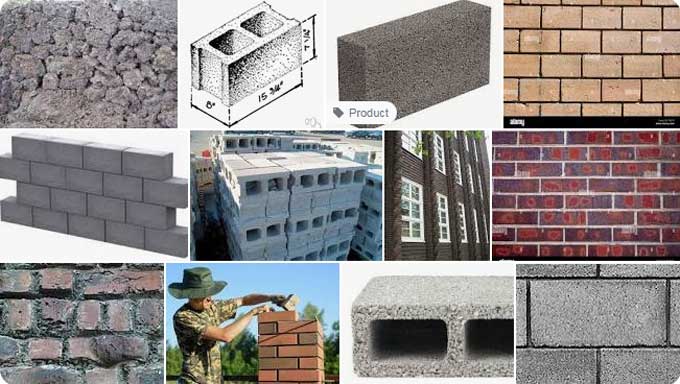
Everything you need to know about the Clinker Block
A Clinker block is nothing but an aggregate-based light concrete construction block. In the United Kingdom, cinder blocks are known as breeze blocks. Clinker blocks are made from cinder and aggregate material.
Clinkers are water-resistant and long-lasting, but they have higher heat conductivity than porous red bricks, therefore they provide less insulation for climate-controlled constructions.
As a result of specific technological advancements, clinker blocks are modern types of ceramic bricks with a greater density.
Mineral minerals of magnetic nature are employed for this purpose. The combination is burnt in a furnace at temperatures ranging from 1000 to 1400 degrees until it reaches the glass phase, which distinguishes the clinker block from the standard one, which is fired at 600 to 800 degrees.
Properties of Clinker Block
Here are a few properties of Clinker block:
- Clinker bricks must have a mechanical strength of 25 M pa.
- Clinker bricks absorb very little water, with a water absorption rate of less than 6%.
- Thermal conductivity exists in clinker bricks.
- Clinker bricks have a compressive strength of 250 to 350 kg sq cm.
Purposes of Clinker Block
Here are a few purposes of Clinker block:
- As a safety barrier.
- For fixing windows and doors.
- To decorate the walls.
- To differentiate the appearance of the structure.
Clinker is largely utilized in the manufacture of cement. It is widely marketed globally since it may be kept in dry conditions for several months without apparent degradation.
Cement firms purchase the clinker for their cement plants in places where cement raw materials are rare or unavailable.
Benefits of Clinker Block
Here are a few benefits of Clinker block:
- The cinder block contains ash as an aggregate.
- Clinker blocks are composed of concrete and cinder.
- Clinker blocks are less dense than concrete blocks.
- Clinker blocks are not strong enough to sustain increased pressure.
Difference between Clinker and Cement Block
| Clinker Block | Cement Block |
| A clinker block is made up of aggregates such as ash. | Wall units are constructed using concrete block ash. |
| Concrete and clinker are used to make clinker blocks. | There are three types of concrete blocks: steel, wood, and cement. |
| Concrete blocks are heavier than clinker blocks. | As concrete blocks contain stone and sand, they are heavier. |
| The use of clinker blocks is generally prohibited since they are not very flexible. | The strength of concrete blocks makes them suitable for almost any structure. |
| Garden walls and other small projects use clinker blocks more often. | Large construction projects are less important than concrete block projects. |
| Old-fashioned clinker blocks are used in construction. | The harder structure of concrete blocks and other advantages make them more popular. |
| The overall cast of the clinker block is higher because it requires a great deal of repair. | Since concrete blocks do not require repairs, they are less expensive. |
Types of Clinker Block
Sulfate Resistant Clinker type
There has been a decrease in its production in recent years because of the availability of granulated blast furnace slag, which can easily be used in cement production in order to obtain sulfate resistance.
Low Heat Clinker type
It is composed of
- 29% alite,
- 54% belite,
- 2% tricalcium aluminate, and
- 15% tetracalcium aluminoferrite,
- With only a trace of free lime.
Because cement made from conventional clinker and pulverized granulated blast furnace slag has good low heat qualities, it is no longer manufactured.
Low-alkali Clinker type
Using an "alkali bleed" is not the best option, as it involves removing some of the high-temperature gases escaping from the kiln system, thus resulting in some heat being wasted.
It is more cost-effective either to replace raw-mix alumina with another component or to install an alkali bleed.
Belite Calciumsulfoaluminate Ternesite type
Using this concept, a type of clinker is produced that emits up to 30% less carbon dioxide than conventional clinkers.
To get more details, watch the following video tutorial.
Video Source: The Restoration Couple
The efficiency of the manufacturing process has improved and the energy costs for the manufacturing process have also decreased by about 15%.


